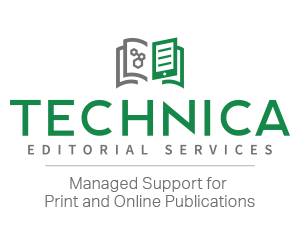You, a prospective author, open your inbox eager to receive that long-awaited acceptance email, only to find a request for additional revisions from the editorial office. Waiting to hear from a journal office about your manuscript can be a grueling experience; the last thing you want after meticulously revising your paper is to be asked to revise it again.
In today’s competitive world of scholarly publication, where manuscripts often appear immediately online upon acceptance, publishers are spending far less time and money on copyediting in an effort to publish information more quickly. As scientists know, time is of the essence! Now more than ever, it is the author who is responsible for preserving their professional reputation by eliminating most errors prior to publication. So how can you avoid further delay? I give you my top 10 reasons the editorial office will request further revisions just before acceptance (eliminating these issues before you submit your final revision may very well expedite publication):
- Permissions. If you’ve cited proprietary resources or have included previously published material (e.g., figures or tables) in your study, it’s imperative that you also obtain permission to use them. Oftentimes this is requested upon first review of your manuscript; however, if you don’t supply appropriate permissions before acceptance, then your submission will be placed on hold until permissions are secured.
- The copyright contains inaccurate information or is improperly signed. Read through the agreement carefully and follow the instructions. You can bet the journal’s legal team will! Be sure to sign and date the form appropriately. Also be sure that all authors’ full names are included and are spelled correctly. If your title changes during revision, then it should match the title on the agreement at acceptance.
- Missing or incorrect graphic labels: If you choose to subcategorize graphics into parts “a” and “b”, for example, don’t forget to also include these identifiers in your captions. Similarly, if you refer to these figure parts within your caption, don’t overlook including them in the graphics.
- Failure to provide properly formatted title pages on ALL files intended for publication. Neglecting to include the full title, all author names, all author affiliations, and the corresponding author’s email address as elements of a title page to a Supporting Information (SI) file is a common mistake authors make. [Note: All journal publishers, of course, do not require an SI title page, so authors should always check a journal’s author guidelines.]
- Figures or tables are mislabeled in Supporting Information (SI) file. All tables and figures in the SI file must be designated as such and labeled correctly. Check the journal’s requirements for style specifications. Absence of proper labeling may put the manuscript back in your hands.
- Track changes in the final version. Including track changes or highlighting text is useful when your objective is to point out changes or corrections to reviewers, but do ensure your manuscript is uniform and clean when submitting your final version for publication.
- Poor figure quality or figure typos. Your figures are your visual evidence, your scientific proof, your aesthetic argument. Make sure they are clear and convincing! Typos can create unwanted confusion and may compromise the impact of your work.
- Journal-specific content missing: Forgetting to include important components for submission, such as keywords, a Table of Contents graphic, or article titles, may also postpone acceptance. These requirements vary within the journal community, so adhere to the Author Guidelines and remember to make alterations as necessary if you are submitting the same manuscript to another journal.
- References are not correctly formatted. There are minor distinctions from journal to journal, so closely examine the style guide for formatting preferences. The most frequent errors typically consist of including issue numbers, missing page ranges, incorrect order of author names, and failure to abbreviate journal titles appropriately.
- Associated Content is not properly listed. If your submission includes a Supporting Information (SI) file, you may also be required to include a supporting information paragraph within your manuscript. Formatting may vary by publication.
A journal’s credible reputation stems from both the presentation as well as the information it offers. Ultimately, the editorial office simply wants to make you look good. Looking for a quick turnaround? It may benefit you to enlist the help of a professional editorial service in order to expedite the acceptance process.
Although this list attempts to capture the most common author blunders just before acceptance, your manuscript may be returned for issues that have gone unmentioned. What other roadblocks have you encountered during your own submission?




